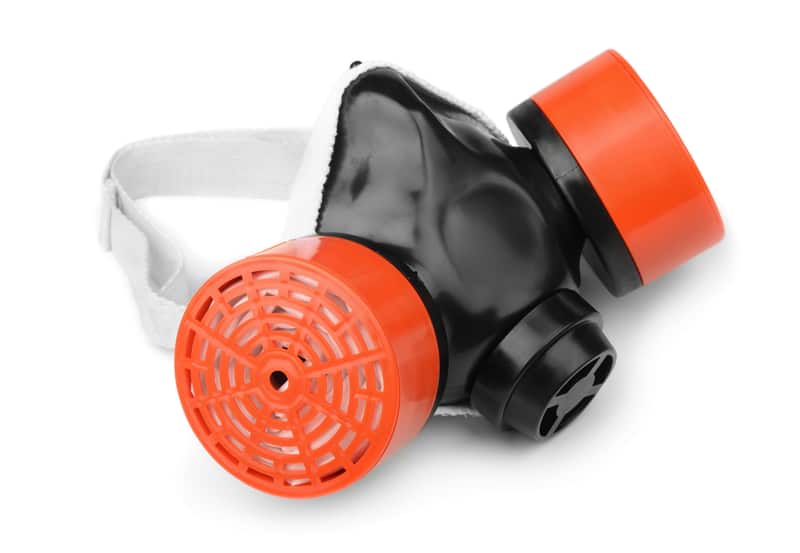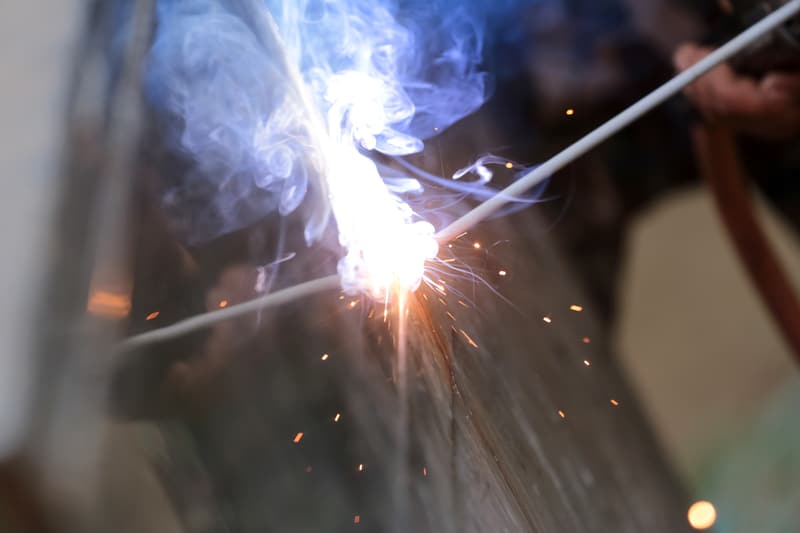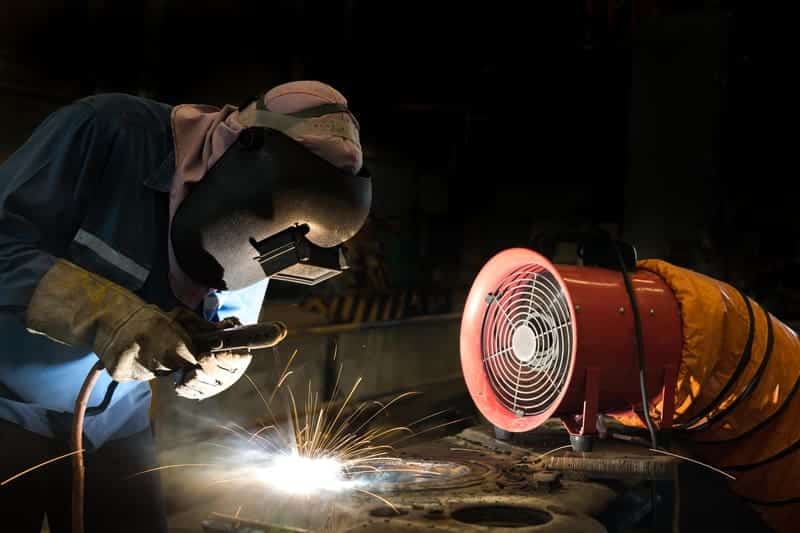“This post contains affiliate links, and I will be compensated if you make a purchase after clicking on my links.”
For a strong and good-looking weld, it’s necessary to keep the weld surface free from any impurities to prevent contaminating your weld. Unfortunately, paint is one of those impurities that can affect your weld quality. Welding on painted materials also puts your health at risk. Whether you’re working on a new metal piece or a recycled material, it is always recommended that you grind the paint off before welding. However, if you’re in a situation where removing the paint is not possible, here are some tips to help keep you safe and create a quality weld.
Tip #1: Wear a Respirator

One of the biggest downsides of welding a painted material is that the high temperatures will cause the paint to melt and burn. Burning paint releases a mixture of hazardous gases. Inhaling these fumes can cause serious harm to your health.
Another red flag is lead-based paints, because when these burn, they release poisonous gases into the air. Therefore, a respirator is critical when welding on painted metal. The same goes for materials with traces of zinc underneath the paint, which is usually the case where older paint types have been used.
Tip 2: Watch Out for Smoke

Another reason welders tend to stay away from welding painted materials is that burning paint creates excessive amounts of smoke. Depending on the paint and its thickness, the effect of the smoke can range from mildly irritating to completely obstructive because of its impact on vision. It’s therefore best do these welds in an open space with a lot of ventilation.
It is also important to note that when welding painted metals, the heavy smoke from the paint can replace the oxygen in your surrounding environment. Therefore, always ensure that you put safety first and have a system to vent out the smoke and toxic gases.
Tip #3: Stick Welding Works Best for Painted Materials
Stick welding, or manual arc welding, is usually the preferred method for welding painted materials. This welding technique works by melting the contact points of the metals using an electric arc. Stick welding requires the two materials to be good conductors of electricity; it works well on painted surfaces because the electric arc is powerful enough to burn through the paint and weld the metal underneath.
Tip #4: Strike an Arc with the Metal Surface
The first process of stick welding is to strike an arc with the metal surface. To do so, first, you need to create contact between the center core of the electrode and the workpiece. Then, you can generate the welding arc by slightly raising the electrode away from the workpiece.
However, painted materials can make it harder for the electrode to create an arc. Therefore, it is best to grind some of the paint off of the starting point to ensure metal-to-metal contact.
Tip #5: Try to Contain the Damage

When you weld painted metals, the arc will burn the paint on the surfaces. There is no other way to get the metals to join. Hence, the painted surface will become damaged along the surface of the weld. However, you can contain this damage by selecting the right welding rod, maintaining the right temperature, and ensuring that the surface is devoid of any other impurities.
Tip #6: Choose the Right Rod for the Job
For a strong weld on painted metal, the weld first needs to penetrate the paint layer and have a deep enough melt onto the metal surface. That’s why selecting the right welding rod matters a lot.
For painted surfaces, good general advice is to choose 6010 or 6011 welding rods. However, each project is going to be unique, and you should do the necessary research to identify the best rod for your purpose.
6010 is an excellent option, as it allows deep penetration and creates x-ray quality welds. The 6010, can be used in horizontal, vertical, flat, or overhead welds, but can only be used with DC. The low-slag product helps the rod to create a clean weld on painted surfaces. 6010 is often the go-to option for welding on contaminated and rusted surfaces.
6011 improves on the 6010 with the ability to work on both AC and DC. These rods are also capable of deep penetration welds. In addition, 6011 is a fast-freeze rod that enables the weld pool to harden quickly, resulting in a faster weld.
If you compare 6010 and 6011, the former is a DC-only rod with high-strength characteristics, while the latter is an AC/DC rod with slightly weaker strength characteristics.
Tip #7: Watch out for Fire
When welding a painted metal, the paint adjacent to the weld surface tends to catch fire because of the high temperatures involved. When you are welding on painted materials, the top surface may appear fine. However, fire may initiate from the bottom portion. If this fire manages to reach combustible materials, it can lead to a hazardous situation.
The best way to prevent this is to check the weld after the process is complete for any indication of fire above or below the work surface. Also, make sure that you cool the surface first to reduce the risk of after-burn.
Tip #8: Remove Paint, If You Can
While this guide discusses several tips that come in handy when you weld on painted materials, it doesn’t negate the fact that welding on painted surfaces results in a lesser-quality weld than welding on unpainted surfaces. This is because the burning paint leaves ashes, while smoke introduces contaminants into the mix.
Therefore, the best tip is to avoid welding on painted surfaces. It’s always better and recommended to remove paint from the weld area before the welding process, and there are several ways to do it. Sanding and angle grinding the surface are some excellent examples.
Wrapping Up
The cleanest welds come from metal-to-metal welding after removing all surface coatings and contamination. While you should always avoid welding on painted material, there are going to be unavoidable situations in which you cannot. Welding in painted material is certainly doable but not recommended. Keep these top tips handy, and you can create a quality weld job even on painted metal surfaces. As always, put safety first!
References:
Welding Over Paint | Mewelding.com
Can You Weld Painted Metal? Why You Need to Clean Metal | Welding Troop (weldingtroop.com)
Do I Need to Clean the Metal Surfaces Before Making Resistance Spot Welds? | twi-global.com
Can You Weld Over Painted Metal? | WeldersLab.com
Welding Shear Studs Through Zinc Paint | kta.com



